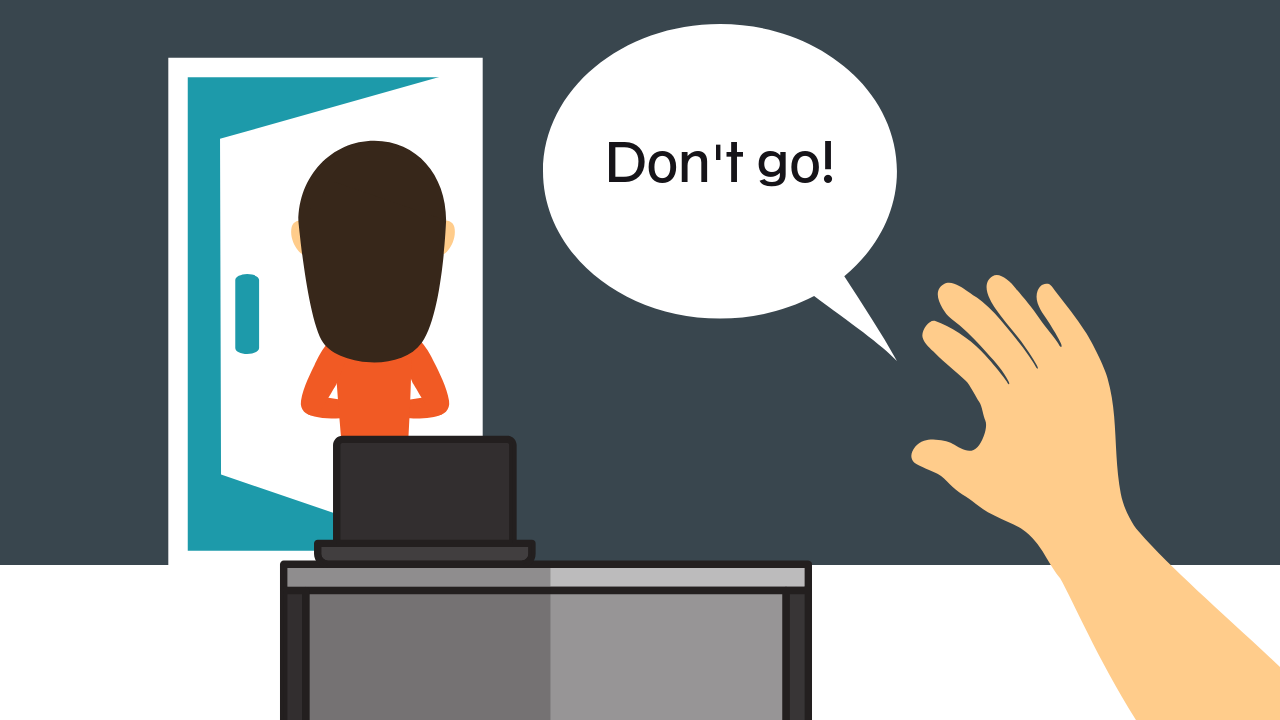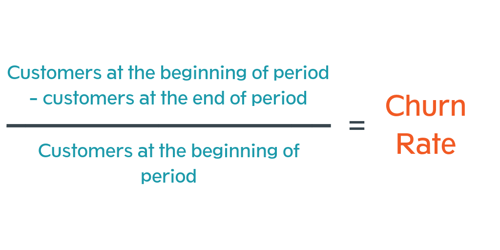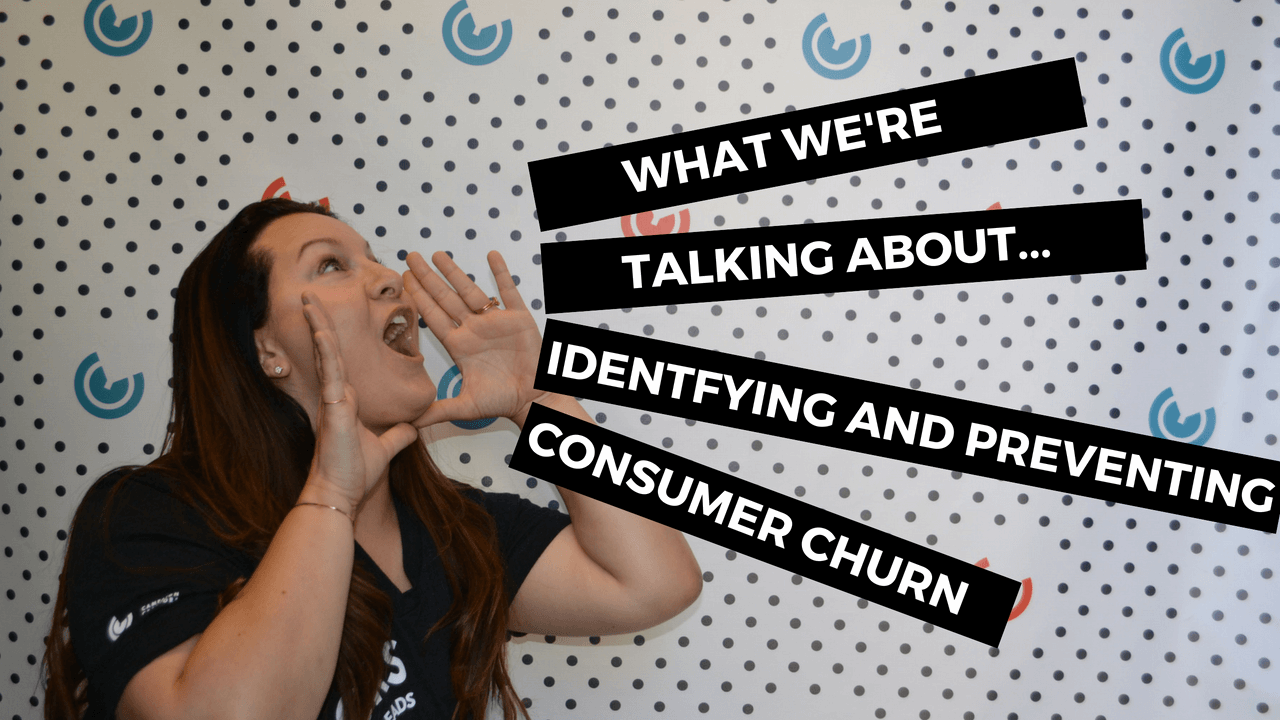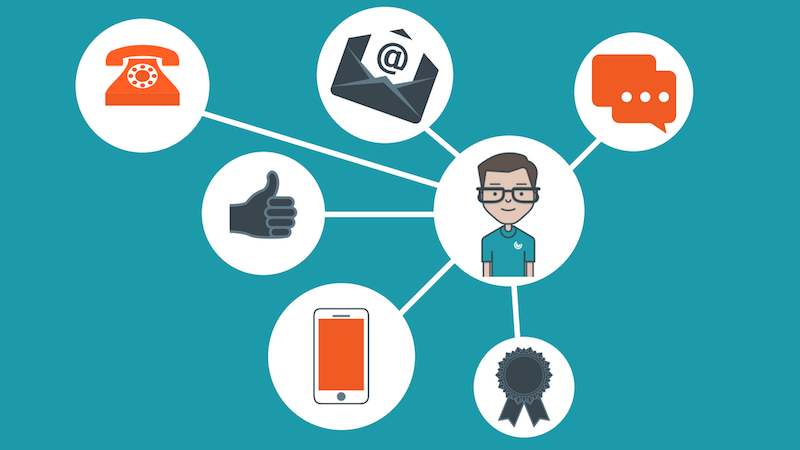What We're Talking About...Identifying and Preventing Customer Churn
Within any business it's important to know when to fight to retain a client before they churn. Customer churn occurs when customers or subscribers...
I know what I am looking for, and would like to chat.
A team of data-driven marketers obsessed with generating revenue for our clients.
Because the proof is in the pudding.
At Campaign Creators we live by three principles: Autonomy, Mastery, Purpose.
7 min read
![]() Daniel Loest
:
10/23/18 1:39 PM
Daniel Loest
:
10/23/18 1:39 PM

Customer churn, also known as customer attrition, occurs when a business loses a customer.
In a product-based business, say selling men's razors, this could mean that a customer has found a better quality product than the one you're manufacturing. So now not only did you lose a customer, but one of your competitors has acquired a new customer.
In a service-based business, this could mean a customer feels dissatisfied and believes you're providing inadequate or minimal service that doesn't meet his or her needs. This means your service could be better focused. You should want to reduce their negative feedback. In this case, you need to expose any of your company's weaknesses and look to solve them so you don't lose more customers.
While it's almost impossible to hold onto every single customer, you should still do everything within the realm of possibility to keep as many as you can. And that comes in the form of a solid customer retention strategy.
So we've rounded up 10 B2B marketing experts to share their most successful customer retention strategies with you, so you, too, can reduce your customer churn.
Now, that we've gone over, effectively, what customer churn is, here's how to calculate customer churn rate:
Pick a time-frame. How many customers did you start with? How many customers are left by the time-frame's end? Divide the change in number of customers by the starting amount. From this, you get a decimal. If below 100% or 1.00, you're experiencing customer churn.

The resulting number is your customer churn rate. If it's above 100% or 1.00, congrats! You have no customer churn! Rather, your business is growing. Analyze your results and determine if you need to focus on implementing customer retention strategies.
Next, we'll go focus on the benefits of decreasing customer churn, and, after, our 10 B2B marketing experts' customer retention strategies that can decrease churn.
By first identifying some benefits of decreasing customer churn, we'll uncover why it's so important to your business. Customer retention strategies tend to highly value customer experience in order to decrease customer churn, which will be apparent within these benefits.
The first benefit we're going to cover is increased sales opportunities. Limit the number of customers you lose in a period, and you'll also retain their loyalty and extend their relationship with your business.
Even reducing churn by just 5% can increase profits by 25%-125%.
This happens because more sales opportunities arise, and returning customers trust you enough to supply them the right product or service. When applicable, and if the fit is right, you can cross-sell or up-sell a product, service or upgrade, based on your previous knowledge of that customer too.
Brand loyalty is built through repeat customers. People become repeat customers when they choose your business over another. They do this because they are familiar with your sales process and are even delighted with it.
50% of customers say they'll use a company more frequently after a positive customer experience.
There is consistency when a customer is loyal to your brand. If you've succeeded in gathering brand loyal customers, they might even overlook price or convenience. And, more than likely, they'll spread positive remarks about your business via word of mouth.
Word of mouth marketing is one of the top influencers of leads and potential customers, and is free once set in motion. It generates leads at a much lower cost per customer acquisition, since prospects can enter at a lower stage in your sales process. Decreasing customer churn is crucial for generating word of mouth marketing. Realistically, your longest held, most loyal customers are most likely to recommend your business to a potential lead.
Decreasing customer churn lowers the cost per customer acquisition. Not only because of the reason listed above, but also because returning customers have already been through your sales process. Because you'll be doing less work and investing less time, effort, and money to push a returning customer through your sales process, you will receive a larger return on investment.
More often than not, a returning customer looks to buy from your business because your product or service offers them a better solution for their problem. They can be up to 50% more likely than new customers to try new products and spend up to 31% more. A customer retention strategy you can use to decrease customer churn is gathering feedback and insight about your customers' needs and problems. Do this and centralize where you can find customer information to quickly access it.
Even if you're successfully guiding a lead through your sales process and converting them into a customer, you don't want them to fade from your reach of influence. Knowing a few customer retention strategies can be immensely helpful. Here are four simple yet effective customer retention strategies you can use to combat customer churn.
Onboarding a customer is the procedure of making your sales process as easy to understand as possible. It's great for introducing a lead to your sales process at any stage, and also improves your chances of nurturing someone into a recurring customer.
Matt Heinz, president of Heinz Marketing Inc., states that “helping your new customers feel appreciated and successful right off the bat is huge.” He further goes on to compare onboarding a new customer as similar to providing them with a clear roadmap. This creates a positive customer experience and is a way for your business to gather information about a customer early on.
According to Alex Mouravskiy, the Chief Marketing Officer at Biorasi, you need to hire the right types of people for the customer facing side of business, which can be good for onboarding and guiding customers through your sales process. His company does this by training all client-facing project managers in soft skills in order to manage and maintain their accounts. Similarly, they make sure to hire expert account and relationship managers, whom work with customers through their entire sales process, “from planning their project to ensuring it's exactly what they want.” This keeps the steps in their sales process clear and manageable when a customer wants to buy from them.
Onboarding a customer through defined steps within your sales process engages them, and often, is the determining factor for a long-term relationship with a customer.
A customer experience workflow is when the proper technology, sales process, and customer information can be found in a central location, immediately accessible to your business's customer facing employees.
John Wall, Partner of Trust Insights, says that CX workflows offer “a process to surface any customer concerns or issues prior to renewal.” Of course, this process is going to be different with every business. It depends on the product or service you're selling and what customer information is valuable to their experience.
Jessica Montville, Digital Marketing Manager at 2Win! Global, implements a customer experience workflow in order to retain customers by identifying a customer's success metrics. Their process to identify these metrics takes them through 6 steps with the help of their own video cloud solution software. This allows professionals within her company to lead conversations with customers, and ultimately changes the nature of interactions between her company and its customers.
Casey Hill, Senior Account Executive at Ontraport, talks about breaking down a customer experience workflow for B2B companies into three stages, during which, you should focus on different strategies of customer retention.
Ultimately, by implementing a CX workflow, you'll be aiming to reduce as much friction that a customer experiences with your product or service as possible.
Let's be a little more preemptive. Offering a knowledge base to your customers gives them a place to find all of the information about your product or service.
Mary Green, an Inbound Marketing Strategist, had this to say about customers experiencing friction with a business: “They want an answer to their problem while they are experiencing it, not later when it's convenient for you and they're facing the problem again.” A knowledge base enables customers to answer their own questions immediately, and allows you to focus on other priorities instead of answering support tickets or phone calls.
Make sure that when you implement a knowledge base for your business it is easy to find, accessible, and provides contextual information.
Our last strategy for reducing customer churn is also the most personable. Although it may take a little extra time out of your day, you can gain customer feedback by checking in with them via email, phone, or another communication channel, to build the relationship between your customer and business.
Sherron Washington, CEO & Marketing Communication Strategist at The P3 Solution, tells about her firsthand experience when gathering feedback from clients. “They like having the experience of being noticed and cared about, so understanding where they may be currently in their business helped to get them reacquainted and made them feel comfortable.” More-so, she emphasizes, that people are tired of pitches and just want a personal experience.
Steven Benson, Founder and CEO of Badger Maps, took this strategy to the extreme and went on a 2 month road trip across the the United States, visiting his 100 largest customers. He declares, “It was the best way I could spend my time to build better customer relationships, reduce churn and grow my business.” Companies often take happy customers “for granted,” and they don't focus on the benefit that comes when meeting face-to-face. You can learn about problems and solve complaints before they happen.
Dani Stancheva, Marketing Manager of Inside Sales Solutions, employs a variation of this strategy, a way to measure customer satisfaction, called Net Promotor Score (NPS). It's a simple strategy, and all she needs to do to execute it is ask her customers, “On a scale of one to ten, how likely would you be to recommend Inside Sales Solutions to someone else?” She measures their answers as:
After, she asks why they answered as they did, which allows her marketing team to then “focus on providing highly, targeted, helpful information to customers who feel they are not getting the best bang for their buck.”
Anne Miner, CEO and President of The Dunvegan Group, tells us about a specific instance, when her company used customer feedback to identify three fundamental components to retaining B2B customers. The three fundamental components are:
Pertaining to her company, they discovered that “while customers appreciated having 24 hour access to company's order placement services, they were more interested in having a contact, whom would have complete understanding of their needs.” Originally, they had operators reviewing customer accounts in their CRM, but soon after, implemented specific individuals to deal with customers, knowing well in-detail the needs of customers.
We hope these tips and insights help you better understand why a focus on reducing customer churn is so important to growing your business. Now you know a few customer retention strategies that help combat churn, and you now know a few long-term benefits that decreasing customer churn produces. There's no reason that you shouldn't focus on decreasing churn and building a better customer experience.
Need more customers to build your CX strategy around? Check out our Lead Nurturing Masterclass! We cover different types of lead nurturing strategies from email drips to B2B nurturing campaigns to help you turn those leads in your database to loyal customers.

Within any business it's important to know when to fight to retain a client before they churn. Customer churn occurs when customers or subscribers...

Customer loyalty can hold massive value for any business. With a conversion rate nine times higher than that of first time customers, a tendency to...

Customer retention, which focuses on building long-term relationships with customers by rewarding loyalty, maintaining engagement, and earning trust,...